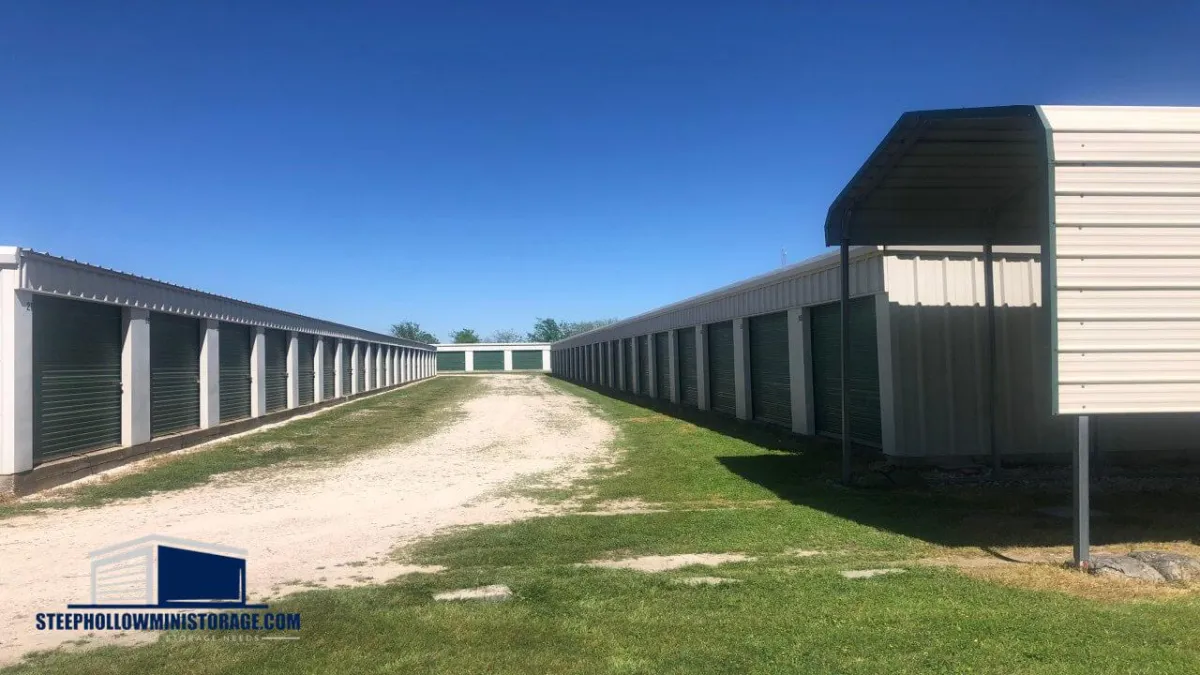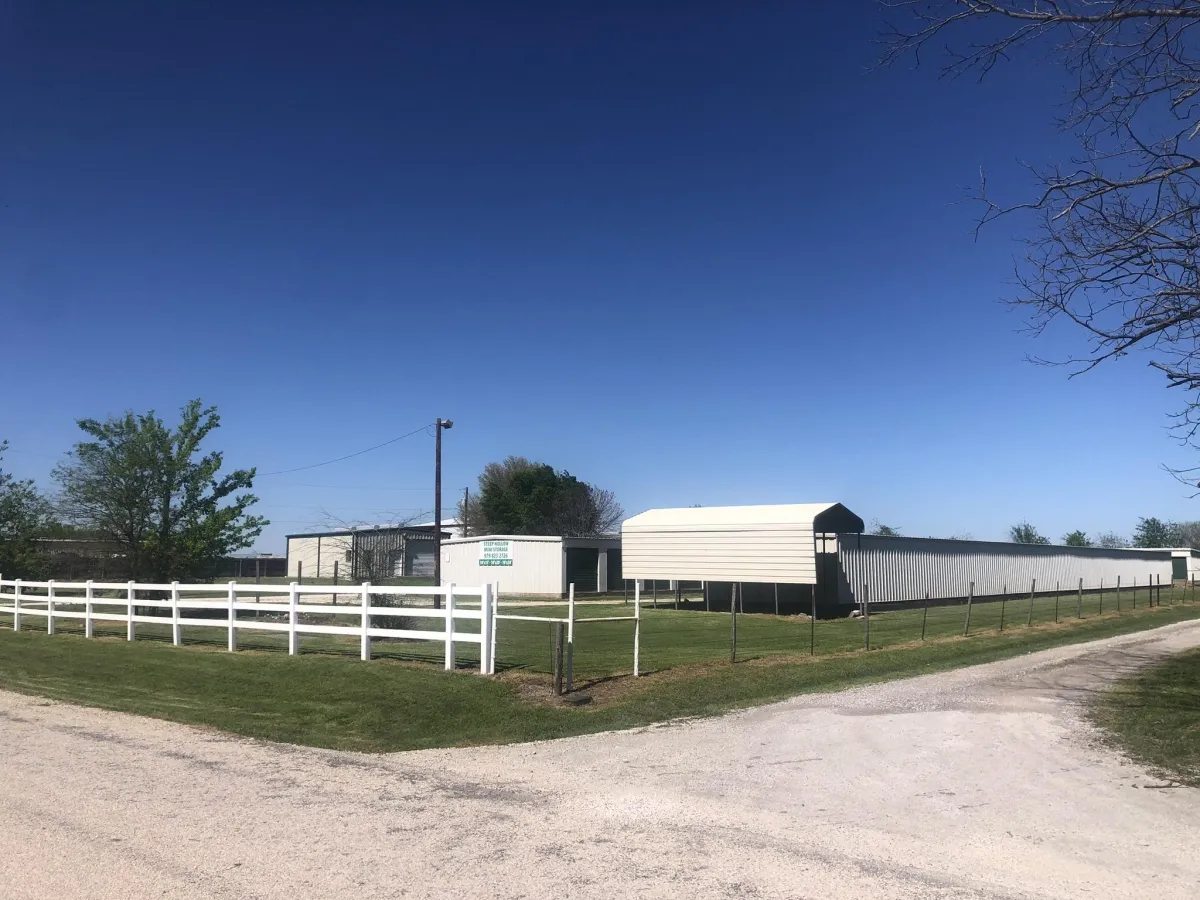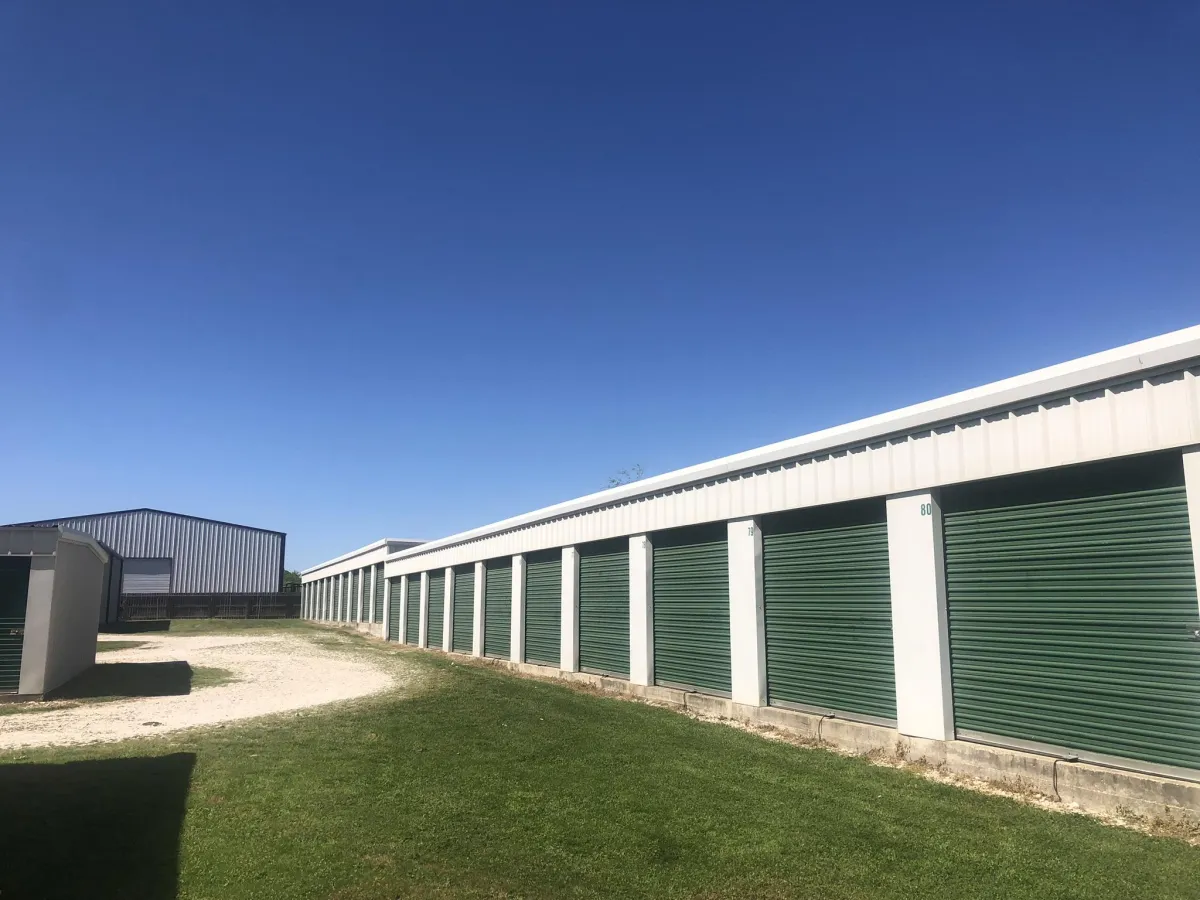
Convenient, Secure
Self Storage Near You
Large
30' x 40'
24 HR Monitoring

$1500
No Units Available
Large
40' x 50'
24 HR Monitoring

$1600
No Units Available
Contact Detail
7125 Coyote Run Rd
Bryan, TX 77808
24 Hour Access | Rent Now Online
Drive up Storage | 24/7 Monitoring
Office Hours
Mon 9:00am - 4:00pm
Tue 9:00am - 4:00pm
Wed 9:00am - 4:00pm
Thu 9:00am - 4:00pm
Fri 9:00am - 4:00pm
Contact-free Storage Rentals
You can rent your storage unit here on our website, get your facility access code and go right to your space. No need to stop into our office!
How It Works
Complete Agreement Online
Make Your Payment
Get Access & Move-in
Steep Hollow Mini Storage
Steep Hollow Mini Storage, nestled in the heart of Brazos County, Texas, provides an array of self-storage facilities that cater to a variety of needs. Customers aren't just offered storage spaces; they're presented with a blend of convenience, accessibility, security, and affordability. It's this unique commitment to delivering customer satisfaction that sets Steep Hollow Mini Storage apart. So, what's the secret behind Steep Hollow's seamless blend of service quality and cost-effectiveness? To find out, let's take a closer look.


7125 Coyote Run Rd
Bryan, TX 77808
Steep Hollow Mini Storage
Storage Units Prices Near Me Services
Self Storage Facility Services
How It Works
Rent a Storage Unit Online
Easily rent a storage unit by visiting our unit pricing page or call us at (979) 823-2726 . Simply choose the unit size that best fits your needs and complete the rental process online.
Secure Your Storage Space
Once you've selected your unit, follow the simple steps to complete your online rental. Your storage space will be ready and waiting for you.
Move In and Enjoy the Convenience!
On your move-in day, our team will ensure that your unit is ready for you. Start storing your belongings right away with ease and peace of mind!
Get Your Self Storage Facility With Ease!
Our crew of professionals will show up on the scheduled date and time to complete your self storage facility .
![[keyword]](https://assets.cdn.filesafe.space/GF0RuvnMLPFuiMYd9fzV/media/64eeaff0-9b15-4094-bfcb-7bbb3efec4cf.png)
Steep Hollow Mini Storage Reviews
Brazos County Self Storage
In the heart of Brazos County, our Steep Hollow Mini Storage in Bryan, Texas provides extensive self-storage services, complete with wide drive-up access for best convenience. Our facility is not just a storage space; it's a secure storage solution designed to meet the unique needs of our diverse clientele. We comprehend the significance of safety when it comes to storing your valuable belongings, and that's why we've made security a top priority.
Steep Hollow Mini Storage guarantees convenient access to your items. No matter the time or day, you can easily get to your stored items, offering you the flexibility you need. Our wide drive-up access means you can load or unload your items directly from your vehicle, making the process not just convenient, but also quick and hassle-free.
Furthermore, we are aware that affordable rates are essential in choosing a storage facility. We're proud to offer competitive pricing without compromising on the quality of our services. At Steep Hollow Mini Storage, you're not just getting a storage space; you're investing in a secure, convenient, and cost-effective storage solution right in the heart of Brazos County.
Frequently Asked Questions
What Sizes of Storage Units Does Steep Hollow Mini Storage Offer?
Steep Hollow Mini Storage offers a variety of storage unit sizes to meet customers' needs. They've got small, medium, and large units available. Whether someone's storing a few boxes or an entire house, they'll find a size that fits. It's also easy to switch units if one's needs change. They're flexible, ensuring that customers always have the space they need.
Does Steep Hollow Mini Storage Offer Any Special Discounts or Promotions?
Steep Hollow Mini Storage does offer special discounts and promotions. They've got seasonal deals that change throughout the year, providing affordable storage solutions. They're also proud to support their local military community with special military discounts. Plus, they've got a fantastic referral bonus program. When you refer a friend who rents a unit, you'll receive a bonus. So, not only do they provide excellent storage, but they also give back to their customers.
What Are the Operation Hours at Steep Hollow Mini Storage?
They're wondering about Steep Hollow Mini Storage's operation hours. Well, it's open seven days a week, providing ample facility accessibility. Their dedicated staff's available during business hours to assist with any storage needs. Even when the staff isn't present, customers can access their units, ensuring convenience. And don't worry, despite not discussing security measures, they've got it covered!
Can I Access My Storage Unit Anytime at Steep Hollow Mini Storage?
Yes, at Steep Hollow Mini Storage, customers can access their storage units anytime. They're granted 24/7 access, providing maximum convenience. However, while the facility guarantees unrestricted access, it doesn't compromise on safety measures. Customers can rest assured knowing their belongings are secure, even with round-the-clock access. So, they've got freedom and security all in one place.
How Can I Make Payments for My Storage Unit at Steep Hollow Mini Storage?
At Steep Hollow Mini Storage, they've made payments easy for their customers. They can pay online, providing the convenience of handling their bill from anywhere. Additionally, there's the option of autopay enrollment. It's a hassle-free way to guarantee they never miss a payment. So, whether they're in Brazos County or beyond, they're covered. It's just one way Steep Hollow Mini Storage simplifies the self-storage process.
How It Works
Rent a Storage Unit Online
Easily rent a storage unit by visiting our unit pricing page or call us at (979) 823-2726 . Simply choose the unit size that best fits your needs and complete the rental process online.
Secure Your Storage Space
Once you've selected your unit, follow the simple steps to complete your online rental. Your storage space will be ready and waiting for you.
Move In and Enjoy the Convenience!
On your move-in day, our team will ensure that your unit is ready for you. Start storing your belongings right away with ease and peace of mind!
Get Your Self Storage Facility With Ease!
Our crew of professionals will show up on the scheduled date and time to complete your self storage facility .
Steep Hollow Mini Storage Reviews
Brazos County Self Storage
In the heart of Brazos County, our Steep Hollow Mini Storage in Bryan, Texas provides extensive self-storage services, complete with wide drive-up access for best convenience. Our facility is not just a storage space; it's a secure storage solution designed to meet the unique needs of our diverse clientele. We comprehend the significance of safety when it comes to storing your valuable belongings, and that's why we've made security a top priority.
Steep Hollow Mini Storage guarantees convenient access to your items. No matter the time or day, you can easily get to your stored items, offering you the flexibility you need. Our wide drive-up access means you can load or unload your items directly from your vehicle, making the process not just convenient, but also quick and hassle-free.
Furthermore, we are aware that affordable rates are essential in choosing a storage facility. We're proud to offer competitive pricing without compromising on the quality of our services. At Steep Hollow Mini Storage, you're not just getting a storage space; you're investing in a secure, convenient, and cost-effective storage solution right in the heart of Brazos County.

Steep Hollow Mini Storage
7125 Coyote Run Rd
Bryan, TX 77808
(979) 823-2726
Contact Us
Service Hours
Social Media
Contact Us
(979) 823-2726
Bryan, TX 77808
Service Hours
Monday - Friday: Open 24 Hours
Saturday: Open 24 Hours
Sunday: Open 24 Hours
Social Media

2024 | All Rights Reserved
















